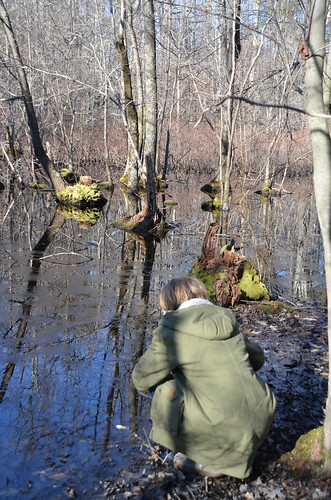There is a small but scientifically significant marsh on the top of Pigeon Mountain in Walker County, Georgia. While my many visits to Pigeon Mountain are for wildflower photography, there’s not a lot of that going on in January, so my wife and two of our grandsons visited the Pigeon Marsh on Wednesday, Jan 23. This marsh was shown to me a year or so ago by Jay Clark, a gentleman with more knowledge of the natural history of Pigeon Mountain than any other I know.
The marsh has standing water in it during the winter, but this dries out during spring or summer. It has been cored by some scientists, who found pollen dating back nearly 20,000 years in the core sample. It was apparently originally a pond, complete with water lilies, but over the millenium filled in to its current marsh status. Here are a couple of more photos:
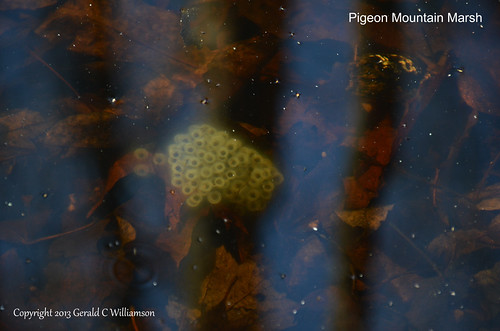
There were quite a number of egg masses like these around the pond. Alan Cressler commented on Flickr that he believes they are the eggs of the spotted salamander.
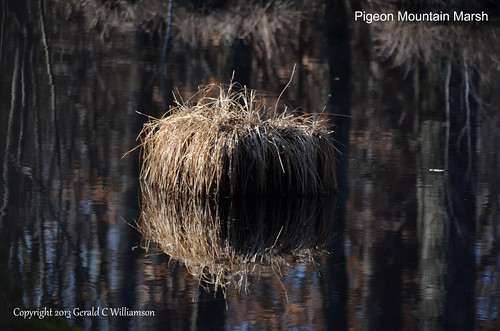
There are a number of these vegetative hummocks (I believe I am applying that term correctly) in the Pigeon Marsh.
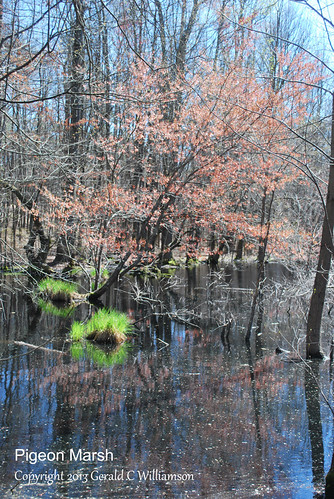
View in the spring season for comparison – this photo was taken on that first visit to the marsh with Jay Clark
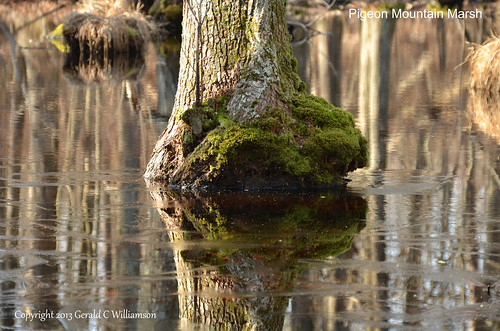
Most of the trees in the marsh have swollen bases, typical of those that are standing in water during a significant part of the year. On this January day there was a thin skin of ice over some of the water.
Reference:
Note: I has seen this marsh referenced as “Pigeon Mountain Marsh” as well as “Pigeon Marsh.” Since “bog” and “swamp” are synonyms of “marsh” it may also be referenced by one of those terms.

